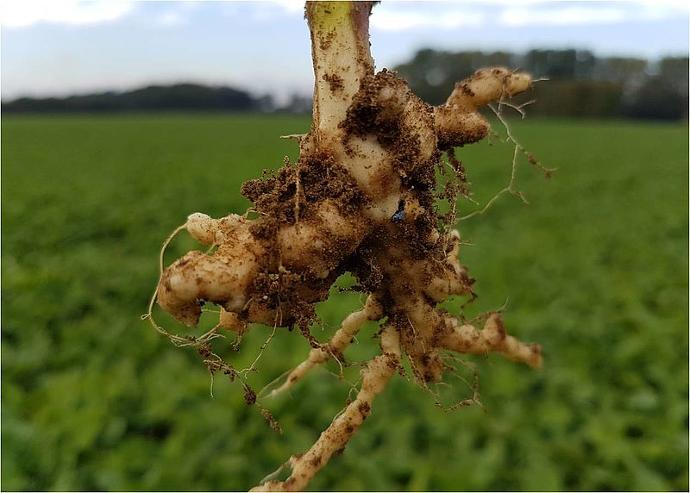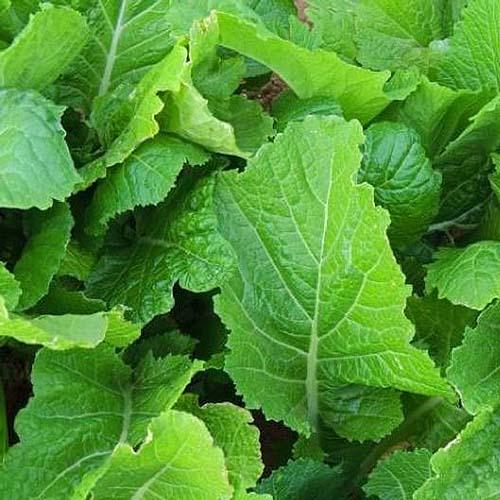Mustard Greens Plant
Mustard greens are annuals, 12-24 inches tall, and frost-tolerant. They prefer well-drained, fertile soil in full sun to partial shade. Keep the soil moist. Mustard greens are edible but not medicinal.
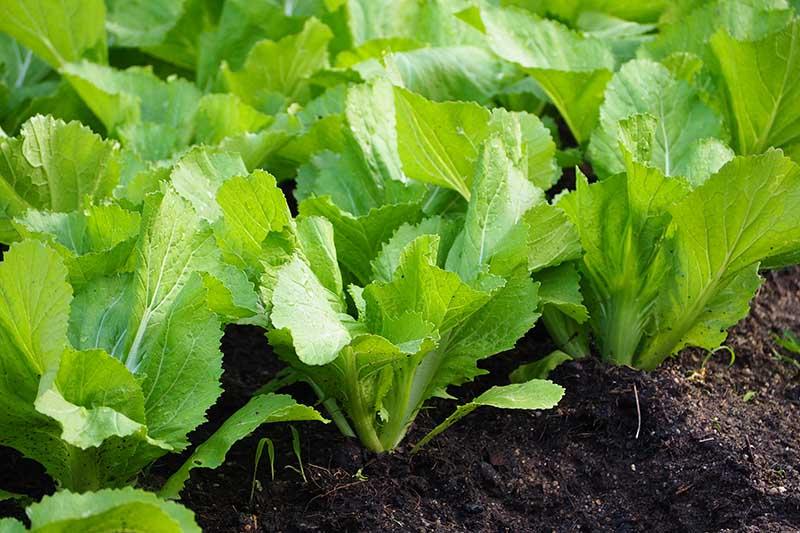
Habit
Annual
Height
0.3-0.5 m
Growth
Fast
Soil
Well-drained, sandy loam
Shade
Full Sun , Partial Shade
Moisture
Moist
Edible
Yes
Medicinal
No
Origin
India, Southeast Asia
Climatic Condition
Tropical, Subtropical
Temperature (°)
18-25°C
Humidity (%)
70-80%
Potting media
Loamy, peat
Fertilizers
Balanced NPK (10-10-10)
Watering
Regular, deep watering
Plant Weight
100-200 g
Flowering Time
Winter, Spring
Soil Ph level
6.0 - 7.5
Water Ph level
6.0 - 7.5
Soil EC
1-2 dS/m
Yield Per Plant
Edible greens
NPK ratio
20:10:10
life Span
Annual
Health Benefits
Rich in vitamins A, C
Suggested Grow Media or Potting Mix ?
40% compost, 30% peat moss, 30% perlite
Suggested Fertigation/Fertilizers
Fertilize every 2 weeks with a balanced, water-soluble fertilizer.
Common Diseases and Remedies
Club root , alternaria blight
infected pods produce small , discoloured and shrivelled seeds , affected plants remain stunted.
Remove infected pruning plant parts , garlic extract 10 %
HEALTH BENEFITS
- Rich in vitamins A, C, and K, promoting eye and bone health.
- Supports heart health and reduces inflammation.
- Helps detoxify the body and improve digestion.
What Is An Mustard Greens?
Mustard greens are leafy vegetables that belong to the Brassica genus, the same as cabbage, broccoli, and kale. It has a peppery flavor and is commonly used in Southern cooking, salads, stir-fries, and soups. It can add nutritional value to your diet as it is rich in vitamins, minerals and antioxidants
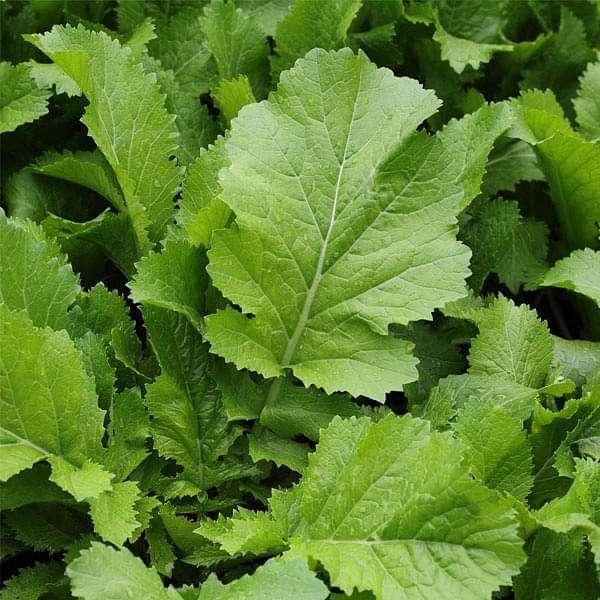
What Are The Different Types Of Mustard Greens?
1. Green Mustard
A standard variety with wide, frilly leaves and a peppery flavor.
2. Red Mustard
Also known as Ruby Streak, this variety has purplish-red leaves and green undersides. It has a spicier taste than green mustard.
3. Curly Mustard
This variety has fringed, curly leaves and a milder flavor than other varieties.
4. Tatsoi
Although not strictly a mustard green, tatsoi is often grouped with mustard greens. It has spoon-shaped leaves and a mild mustard-like flavor.
5. Giant Red Mustard
As the name suggests, this variety has large burgundy leaves and a strong spicy flavor.
6. Mizuna
Another relative of mustard greens, Mizuna has pinnate leaves and a mild peppery flavor.
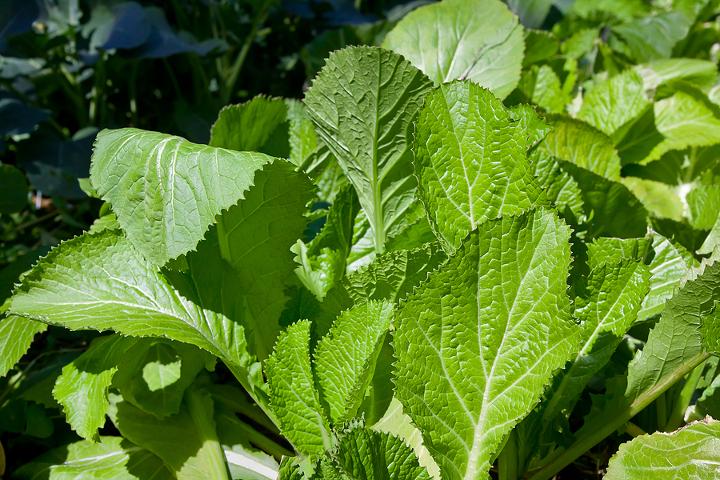
How To Care For Mustard Greens?
1. Location
Mustard greens can be grown indoors or outdoors, depending on the climate and available space. Grows outdoors in full sun and well-drained soil. Indoors, it requires a sunny location, such as a south-facing window, and regular watering.
2. Sunshine
Mustard greens grow well in sunlight. Therefore, for optimal growth and flavor development, ensure at least 6 hours of direct sunlight each day. It will tolerate some shade, but if it gets too much shade it may become overgrown and reduce yield.
3. Soil
Mustard Green plants prefer well-drained, fertile soil with a slightly acidic to neutral pH value (approximately 6.0 to 7.5). It grows best in soil rich in organic matter, such as compost or well-rotted manure. Make sure the soil is loose and loose to encourage root growth. If your soil is heavy or compacted, you can amend it with organic matter to improve texture and drainage. Additionally, mustard green plants grow in full sun, but can also tolerate partial shade. Regular watering is essential to keep the soil evenly moist and free from waterlogging.
4. Hydration
To keep mustard greens hydrated, water regularly by rainfall or irrigation, aiming for about 1 to 1.5 inches of water per week. Make sure the soil stays evenly moist and not soggy. Mulching helps retain moisture and regulate soil temperature. Also, to prevent diseases caused by mold, avoid watering from above and focus on watering at the base of the plant.

5. Nourishment
Mustard greens grow in well-drained, fertile soil with a pH of 6.0 to 7.5. To keep the soil constantly moist but not soggy, it is necessary to water regularly, especially during dry periods. You can fertilize with a balanced fertilizer (e.g. 10-10-10) before planting and fertilize with a high nitrogen fertilizer once the plant is established to encourage foliage growth. Additionally, incorporating organic matter such as compost into the soil before planting can provide important nutrients for healthy growth. Regularly monitor your plants for signs of nutrient deficiencies and adjust fertilization accordingly.
6. Issues
Mustard problems vary depending on the situation, but common problems include pests (such as aphids and caterpillars), diseases (such as downy mildew and cabbage roots), nutritional deficiencies, and malnutrition. This includes things like proper watering. Identifying specific symptoms can help you identify the problem and find a solution.
What Are The Benefits Of Mustard Greens
Mustard greens have numerous health benefits, including being rich in vitamins A, C, K, folate, calcium, and fiber. They can promote eye health, boost immune function, support bone health, aid digestion, and are high in antioxidants, reducing the risk of chronic diseases such as heart disease and cancer. There is also a possibility. Plus, it's low in calories, making it perfect for weight loss diets.
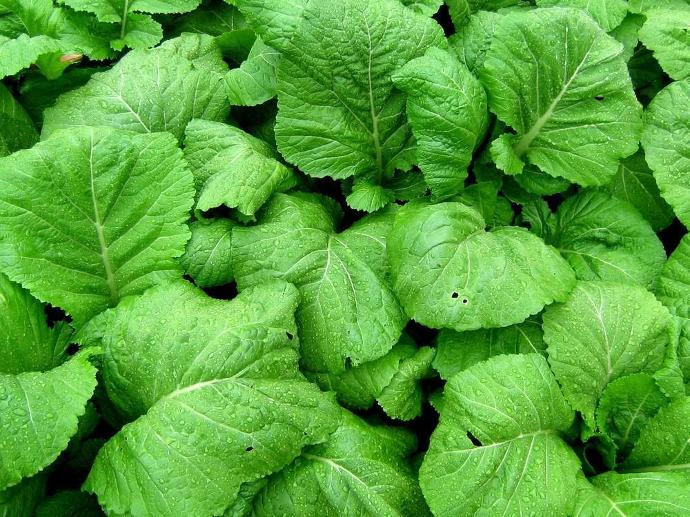
FAQs About Growing Mustard Greens
1. Can I Grow mustard greens indoors?
Yes, you can grow mustard greens indoors. It grows best indoors, especially in containers or pots. Make sure it gets plenty of sunlight (about 6-8 hours a day) or use a grow light if you don't have enough natural light. Keep the soil moist but not waterlogged and provide adequate air circulation. With proper care, you can enjoy fresh mustard greens in your indoor garden.
2. What is mustard greens used for?
Cooking Particularly common in Asian and Southern cooking. It can be fried, sautéed, steamed, or added to soups and stews. Pickling Mustard greens can be pickled alone or as part of a mixed pickle. Garnish Can be used as a garnish to a variety of dishes, adding color and flavor.
3. How to care for mustard greens?
Follow these steps to care for mustard greens. Watering Mustard greens require a certain amount of moisture. Water regularly, especially during dry periods, to keep the soil evenly moist. Fertilization Use a balanced fertilizer or compost to provide necessary nutrients. Apply according to the instructions on the fertilizer package. Weeding Keep the area around mustard greens free of weeds as they can compete for nutrients and water. Mulch Place mulch around plants to retain moisture, suppress weeds, and regulate soil temperature. Pest Control Monitoring of pests such as aphids, caterpillars, and flea beetles. If necessary, use natural or organic methods such as hand-picking, insecticidal soap, and neem oil. Disease Management Look for signs of diseases such as downy mildew and powdery mildew. To reduce the risk of fungal infections, provide good air circulation around the plant and avoid overhead watering.
4. Which pot is suitable for growing mustard greens?
A pot that is at least 6 to 12 inches deep and 12 to 18 inches in diameter is suitable for growing mustard greens. Make sure there are drainage holes in the floor to avoid water seepage. Also, choose a pot made of a breathable material such as terracotta or plastic.
5. Where can I buy Takana?
Mustard greens can be purchased in a variety of places, including local grocery stores, supermarkets, farmers markets, and even online grocery delivery services. It is often sold in the produce section along with other leafy vegetables. If you prefer organic or specialty varieties, consider checking out specialty grocers and farmers who sell directly to consumers.
